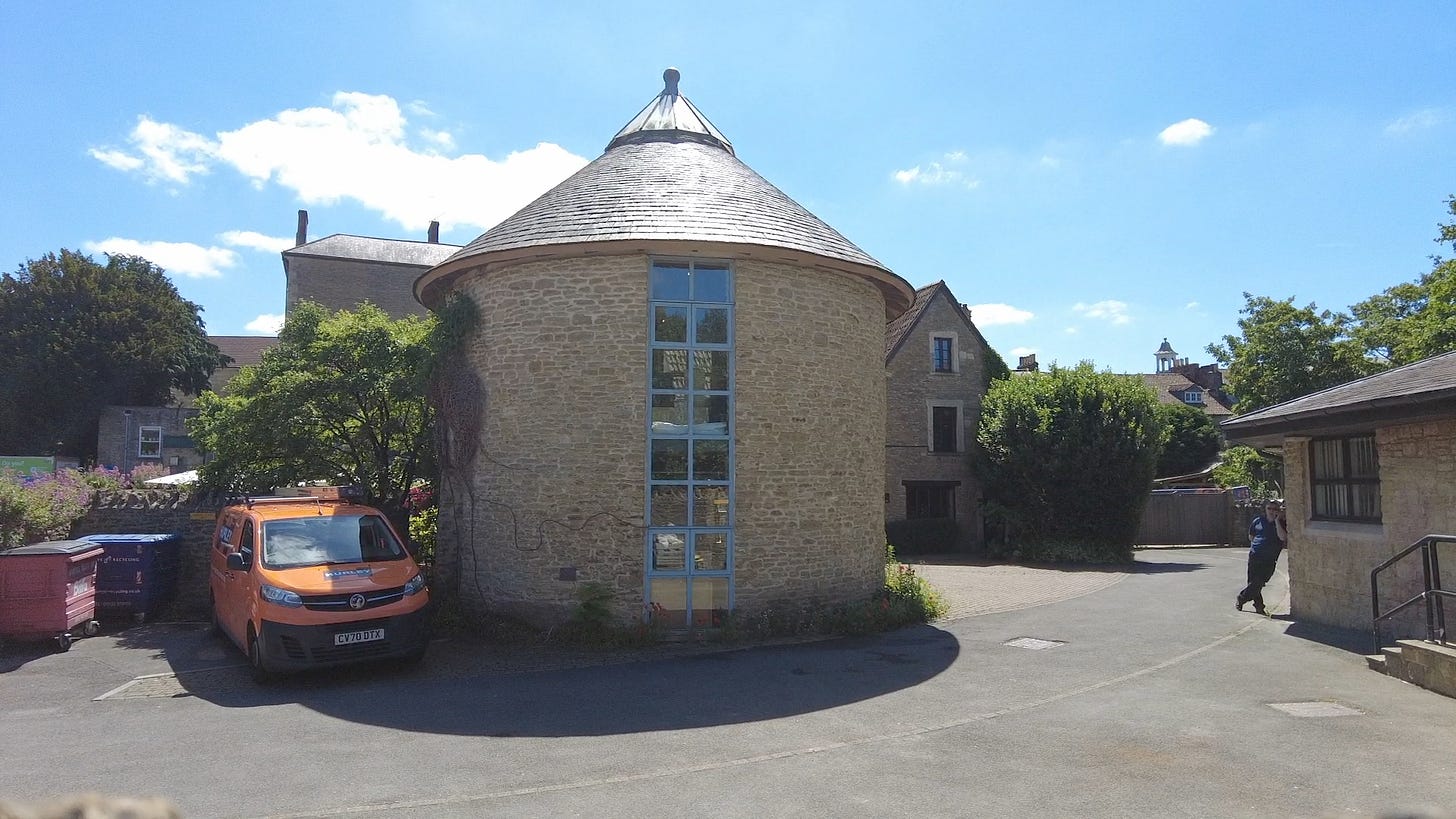One of the most charming towns you can visit is Frome in Somerset. The centre of Frome has a beautiful collection of historic buildings running along charming streets. Frome has a long history and is somewhere that I visit often. There is a very interesting variety of independent shops and a range of places to eat or stop for a drink.
Please note that the pronunciation of this town is Froome.
The beginning of Frome can be traced back to Saxon times (English period 5th to 11th century), and the name is believed to come from a Celtic river name meaning brisk or fair. A monastery was founded around 685 AD by the Abbot of Malmesbury, St Aldhelm. The monastery seems to have disappeared by the 11th century. The River Frome flows through the town.
By the time of the Doomsday Book (1086), Frome had grown into a busy town with a population of 600 (a town size in those days). The record shows that it had four watermills producing flour at that time. A weekly market was established, and from 1270, it had a fair. Fairs were like markets but on a grander scale, held once a year and attracted traders and customers from all over the area. In 1492 the town was granted the right to have another two annual fairs. Thankfully, markets are still enjoyed today with all sorts of products being sold.
Frome a Woollen Town
During the 14th century, Frome developed as a Woollen town, with at least five fulling mills in operation. The industry complemented towns over the border in Wiltshire, such as Trowbridge and Bradford on Avon, also expanding due to the woollen and cloth industry. During the 16th and 17th centuries, the manufacture of woollen goods was the dominant industry.
A writer in 1721 said that Frome was “very famous for the manufacture of broad and woollen cloths.”
The production of cloth ended in 1965, although carpet production did keep going until the 1990s.
Frome Street Names
A 13th-century chapel dedicated to St Catherine gives its name to Catherine Street, a steep hill lined with small shops and houses, and for those fit enough, a must-see area of Frome along with old roads off to either side along the climb to the top.
Cheap Street is unusual because water from a spring runs in an open channel down its length. The name comes from an old English word, ceap, meaning to sell.
The Butts is believed to derive from an archers practice field, although in England many places called The Butts have been so named because it is a point where fields/areas butted up to each other
A bridge over the River Frome (Bridge Street) is reminiscent of the Ponte Vecchio in Florence and the Pulteney Bridge in Bath. Those bridges are built with shops on them, and Frome has shops with apartments above built on the bridge. Opposite those shops, but not on the bridge, is The Blue House. It was built in 1726 on the site of late 15th-century almshouses. Until 1926 it housed The Blue School, so named because of the colour of the school uniform.
A Change in Industry
As the woollen industry declined, other industries grew in Frome. Iron foundries developed likely due to the availability of coal close by from the Somerset coalfields. One company of great acclaim was JW Singer which produced many famous statues and castings.
Printing also became an established trade, and many books and magazines over the years have been produced in Frome. Butler and Tanner was a prominent printer and employer, Britain’s oldest and foremost colour print, established in 1845. The business went into administration in 2014.
The railway came to Frome in 1850 and is one of the oldest through train shed railway stations still in operation in Britain.
Frome’s Cockey Lamps
Another notable feature on some of the older streets are the Cockey lamps. They are very ornate and were manufactured by the Cockey family, hence the name today. They are recognisable by a distinctive leaf pattern. Originally made as gas lamps (gas lighting came to Frome in 1831), they were later converted to electricity. The lamps are now listed as architecturally important and can’t be removed. Lewis Cockey came from a long-established family of clockmakers. He came to Frome in 1685, where he began casting church bells. Later the family business diversified, and in the early 19th Century, it started casting products for the Gas industry.
There is so much history in Frome and the local museum is small but worth a visit, entry is free and can be found in North Parade close to the River Frome and that wonderful bridge. It is open 10 am to 2 pm Tuesday to Saturday, mid-March to mid-November.
When you do visit Frome, remember to explore every little street around the main old town that you can. Look up above the shops, and down the alleys at the rear. Many of the names of the houses will also give you a clue about the past as you walk along.
I hope you have enjoyed this tour of Frome, there is still much more to see, and no doubt, I will tell you more in future articles.
For a video tour - see my YouTube video.
If you would like to make a donation to support this blog you can do so through Buy Me a Coffee and help put some petrol in the car!











